Mastering Pool Care: Selecting the Ideal Chlorine for Pristine Water
March 20th, 2024
March 20th, 2024
A shimmering pool on a hot day can be both a sanctuary and a centerpiece for summer gatherings. Yet, maintaining that crystal-clear water requires more than just a skimmer and a splash of enthusiasm. Chlorine, the unsung hero of pool maintenance, keeps those waters inviting and safe, warding off algae, bacteria, and other unwanted guests. Whether you’re a seasoned pool owner or a newbie still learning the ropes, understanding the nuances of adding chlorine is crucial.
When I first ventured into pool ownership, the array of chlorine options was overwhelming. Tablets, granules, and liquid chlorine each offered their own benefits and quirks. Tablets, for example, provide a slow-release option perfect for consistent maintenance, whereas granules can deliver a rapid chlorine boost, ideal for those times when the pool party is just around the corner. Liquid chlorine, on the other hand, is straightforward and easy to disperse but requires careful handling and precise measurements.
Choosing the right form depends not just on the type of pool but also on your lifestyle and maintenance habits. It's all about balancing convenience with efficacy. As with anything, practice makes perfect, and soon enough, you'll find the method that aligns best with your pool’s needs and your own routine. So, let's explore how each type of chlorine can keep your pool sparkling clean and ready for those lazy afternoons or energetic cannonballs.
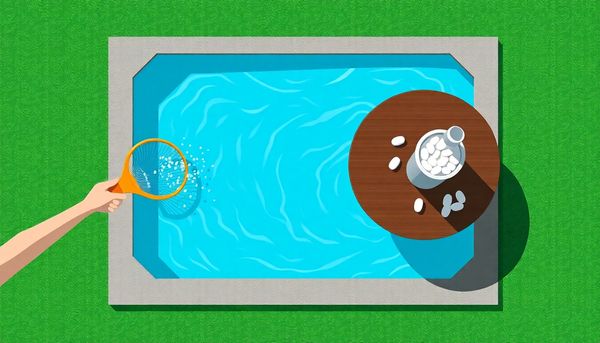
Mastering the art of adding chlorine to your pool can transform your backyard oasis into a sparkling haven. With options like tablets, granules, and liquid chlorine, each method holds its own unique benefits. Let's explore how to apply these effectively.
Tablets are a popular choice due to their slow-dissolving nature, which offers a steady release of chlorine. To achieve the best results, use an automatic chlorinator. This device allows for consistent dispersion, avoiding the uneven distribution that can occur with floating dispensers. Remember, keep your pump running to ensure tablets dissolve effectively. Overloading your feeder isn't advisable; stick to the right amount based on your pool size to prevent excess chlorine.
Granules, on the other hand, offer a fast-dissolving alternative for those who need immediate results. Begin by dissolving them in a bucket of pool water, a step that prevents granules from settling on the pool floor. Stir with a wooden stick, then distribute evenly throughout the pool. This method is perfect for those quick fixes when chlorine levels drop unexpectedly.
Lastly, liquid chlorine is your go-to for rapid chlorination. This high-percentage chlorine solution should be added carefully. Pour it into the pool while the pump is on, either directly in front of the return jet or by walking around the perimeter. Unlike tablets and granules, liquid chlorine lacks stabilizers, so it's essential to add them separately to prolong its effectiveness in bright sunlight.
By mastering these methods, you'll ensure your pool remains inviting and safe, ready for endless enjoyment.
Choosing the right type of chlorine for your pool involves more than just picking the first option you see on the shelf. It's about understanding your pool's unique needs and matching them with the strengths of each chlorine form. Chlorine tablets, for instance, are incredibly convenient, slowly dissolving to maintain consistent sanitizer levels. They're perfect if you prefer minimal maintenance, but be wary—they can cause cyanuric acid build-up, which may cloud your water over time.
Granules, on the other hand, offer flexibility and quick action. They dissolve faster, which can be a great advantage when you need a rapid boost in chlorine levels. My neighbor swears by them, especially after heavy pool parties, as they allow him to swiftly address any dip in sanitizer levels. Just remember, granules require more frequent application compared to tablets.
Liquid chlorine is the powerhouse for those who need immediate results. It's particularly useful for large pools or if you're treating visible algae outbreaks. However, it lacks stabilizers, so you might find yourself using more if your pool gets a lot of sun exposure. My cousin uses liquid chlorine to shock her pool at the start of every season, ensuring a clean slate free of lingering contaminants.
Ultimately, your choice should reflect your pool's conditions and your maintenance style. Whether you prioritize ease, control, or power, understanding these options ensures your pool stays sparkling clean without unnecessary hassle.
Ever pondered why your pool sometimes turns into a chemistry experiment gone wrong? Achieving the ideal chlorine distribution can feel like a delicate dance but mastering it ensures a pristine swimming experience. Each type of chlorine—tablets, granules, or liquid—has its quirks, and understanding these can make all the difference.
Tablets, for instance, are slow-release and best suited for steady maintenance. However, they can concentrate in one area if not used with an automatic chlorinator, potentially damaging your pool liner. I learned this the hard way when my floater lodged itself behind our pool ladder. Since then, I've embraced the automatic chlorinator, adjusting its settings to match the pool's chlorine demands.
Granules, by contrast, offer a quicker response. When I first used them, a friend advised me to pre-dissolve them in a bucket of pool water. This simple step stopped them from settling at the bottom, which could otherwise leave stubborn bleach spots. Pouring the solution around the pool’s edge while the pump runs ensures even distribution without fuss.
Then there’s liquid chlorine, the swiftest among the trio. For family barbeque weekends, when the pool sees a surge in usage, I turn to liquid chlorine. Pour it slowly near the return jet, allowing the circulating water to do the heavy lifting of dispersal. Since it lacks a stabilizer, adding cyanuric acid is crucial to extend its lifespan under the sun.
Optimizing chlorine distribution isn't just about methods—it's about adapting them to your pool's unique needs. Regular testing and adjustments ensure you’re not just keeping the water safe, but also maximizing your chlorine's efficacy.
Understanding the delicate chemistry of pool maintenance is akin to mastering a fine art. Each element in your pool water plays a role in keeping your swimming environment pristine, and maintaining the correct chemical balance is crucial. When adding chlorine to your pool, whether as tablets, granules, or liquid, it’s not just about the chlorine itself. Free chlorine levels should be carefully monitored and maintained between 1 and 3 PPM; 3 PPM being the sweet spot. This level can decline due to factors such as heavy swimming activity, contaminants from rain, or improper cyanuric acid levels.
Regular testing is your best ally, ensuring that all components like pH and total alkalinity remain in harmony. A balanced pH level enables chlorine to perform its job efficiently, while steady alkalinity prevents wild pH swings. Remember, test and adjust in sequence: alkalinity first, then pH, and finally chlorine. This methodical approach helps in averting potential water issues and ensures the longevity of your pool equipment.
Moreover, don’t overlook the cumulative effect of using chlorine tablets, which add cyanuric acid to the water. This stabilizer guards chlorine against the sun but can accumulate and require regular testing. If the cyanuric acid level gets too high, it may interfere with chlorine effectiveness. Balancing these factors is your key to a hassle-free and inviting swimming environment.
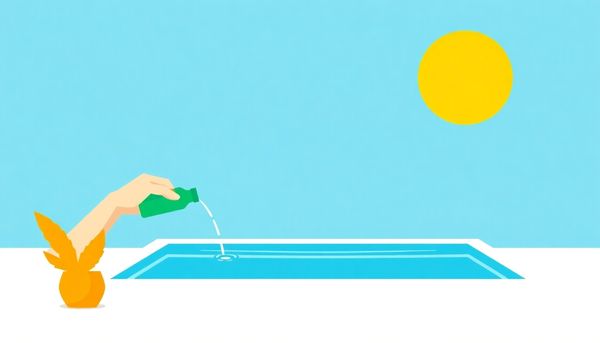
Balancing pool chemistry is much like tuning a finely-strung instrument; small adjustments can lead to harmony, while neglect can create chaos. Each component of your pool's chemistry plays a role in maintaining water clarity and swimmer comfort, so understanding their interaction is key. Chlorine, whether in tablet, granule, or liquid form, is merely one player in this symphony. It works best when supported by optimal pH and total alkalinity levels.
When you test your pool water, don't just focus on chlorine. Start by checking your total alkalinity, which acts as a buffer for pH levels. A stable pH ensures chlorine works efficiently. Think of total alkalinity as the foundation of a house—if it’s unstable, everything else will be as well. Once alkalinity is balanced, adjust your pH. Keeping it around 7.4 to 7.6 allows chlorine to perform at its best, killing bacteria and sanitizing your pool effectively.
Weekly testing is your best friend here. It's not just about keeping the pool clean, but also ensuring that swimmers enjoy a safe and comfortable experience. I once neglected my pool's alkalinity while focusing solely on chlorine levels, resulting in an itchy aftermath for unsuspecting swimmers. Remember, achieving perfect pool chemistry is about finding that sweet spot where all elements work together seamlessly. Regular checks and adjustments are essential, and your pool will thank you with sparkling water and endless summer enjoyment.
Selecting the ideal chlorination method for your pool can feel like navigating a maze, but understanding the strengths and quirks of each option makes the journey smoother. Tablets, granules, and liquid chlorine each have their unique attributes and suit different lifestyles and pool needs. If convenience tops your priority list, chlorine tablets might be your best friend. They dissolve slowly, providing a steady release of chlorine over time. This makes them perfect for busy individuals who prefer a low-maintenance routine. However, be cautious of potential pH drops and the gradual buildup of cyanuric acid, which can affect chlorine's efficiency.
Granules, on the other hand, offer a quick solution when you need to adjust chlorine levels rapidly. They dissolve faster than tablets, allowing for immediate intervention when the pool's chemistry demands it. If your weekend pool parties leave your water less than pristine, granules are a reliable ally. Just remember to pre-dissolve them to avoid any residue settling at the bottom of your pool.
Lastly, liquid chlorine is the go-to for pool owners seeking an immediate impact without the hassle of dissolving tablets or granules. It’s particularly effective for larger pools where precise dosing is required. Yet, its lack of stabilizers means you'll need to add cyanuric acid separately to prevent the sun from gobbling up your chlorine. Balancing ease of use with your pool's specific demands will ensure your water remains crystal clear and inviting.
Balancing a pool's chemistry isn't just routine; it's an art that keeps your backyard oasis shimmering and inviting. Reminiscing about the days when you spent hours under the sun, it seems effortless. But behind the scenes, there’s a science to perfecting those clear waters. Testing your pool weekly becomes a safeguard against unexpected issues. Checking not only for chlorine levels but also pH and alkalinity, ensures everything works harmoniously. By doing so, you allow the chlorine to be a true sentinel, guarding against algae and bacteria.
Remember last summer when a sudden rainstorm threw everything out of whack? Such surprises highlight the importance of regular testing, especially after unusual weather or heavy pool use. Adjusting the pH first, followed by alkalinity, sets a solid foundation, letting chlorine perform at its peak. These tasks might seem tedious, but they prevent future headaches. It's akin to tuning a musical instrument; each note, or in this case, each chemical, must be in sync.
Moreover, if you notice a swift drop in chlorine levels, it might be time to delve deeper. This could be a sign of an underlying problem, requiring more than just surface-level adjustments. Like a detective, you’ll need to investigate other factors such as cyanuric acid or even the potential for organic contaminants. A weekly commitment to these checks not only maintains beauty but also ensures safety, guarding against potential health hazards.
Handling chlorine safely is crucial, not just for the health of your pool, but for your personal safety as well. Always don protective gear, such as gloves and goggles, to guard against accidental splashes. Chlorine, despite its pivotal role in maintaining pool cleanliness, is a corrosive substance that can harm skin and eyes. A colleague once underestimated this, leading to an unpleasant skin irritation that could have easily been avoided with simple precautions.
Storing chlorine correctly is just as important. Ensure it's kept in a cool, dry, and ventilated location, away from direct sunlight and moisture. This prevents any chemical reactions that could reduce its effectiveness or cause hazardous situations. Remember the story of a friend who maintained a pristine pool all summer, only to have a leaky shed ruin his chlorine supply? Keeping chemicals away from organic materials and metals is essential; chlorine is reactive and can cause corrosion or fire hazards.
When it comes to mixing chlorine, never add water to the chemical; instead, always add the chemical to water. This prevents dangerous reactions that can occur if chlorine is introduced too quickly to a large volume of water. Treat every step in handling and storing chlorine with care, ensuring your pool remains a safe and enjoyable oasis all season long.

Selecting the perfect chlorine dispenser can feel like choosing the right companion for maintaining your pool's sparkling clarity. Each option—be it a floating dispenser, automatic chlorinator, or direct granule application—comes with its own set of characteristics that can align or clash with your pool maintenance style.
Consider the floating dispenser, often a favorite for its simplicity. These small devices bob around the pool, slowly releasing chlorine tablets as they dissolve. However, this can lead to uneven distribution, especially if your pool has strong currents or areas where the floater might get stuck. I've seen this firsthand with a friend's pool, where a persistent floater left a patch of liner slightly discolored. It taught us both the importance of keeping an eye on where the floater roams.
On the other hand, an automatic chlorinator presents a more hands-off approach. This gadget fits directly into your pool's circulation system, ensuring a consistent flow of chlorine. You simply adjust a dial to match your pool's needs. This is ideal for those who prefer less frequent manual handling. Remember, though, to fill the chlorinator with the correct number of tablets, as overloading can lead to overchlorination.
For a quick boost, granules might be your go-to. They dissolve rapidly, allowing for a fast adjustment in chlorine levels. Just ensure they’re pre-dissolved in water before adding them to avoid residue at the pool's bottom.
Whichever method you choose, always keep an eye on your pool's unique needs and stay adaptable. The right dispenser not only simplifies pool care but ensures your swimming sanctuary remains inviting all season long.
Embarking on the quest for the ideal chlorine type for your pool can feel like navigating a maze, but it doesn't have to be. Each form of chlorine—tablets, granules, or liquid—offers unique advantages tailored to different needs and preferences.
Imagine chlorine tablets as the slow but steady workhorse. They dissolve over time, releasing a consistent flow of chlorine into your water. Ideal for those who prefer a set-and-forget approach, tablets are perfect for use in automatic chlorinators. However, their gradual dissolution means they might not be the best choice if you need a quick boost in chlorine levels. Additionally, they introduce cyanuric acid into your pool, which requires regular monitoring to prevent excessive buildup.
Granules, on the other hand, are the sprinters of the chlorine world. They dissolve quickly, providing an immediate increase in chlorine levels. This makes them suitable for pools that see a lot of use or face frequent contaminant challenges. Pre-dissolving them in water before adding to the pool ensures even distribution and prevents damage to pool surfaces.
Liquid chlorine stands out for its simplicity and effectiveness, especially when dealing with algae or cloudy water. It disperses rapidly, ensuring uniform distribution across your pool. However, being unstabilized, it lacks cyanuric acid, necessitating additional steps to safeguard it from sunlight degradation. If routine, quick adjustments fit your style, liquid chlorine may be your best ally.
Ultimately, your choice hinges on the specific needs of your pool and how hands-on you wish to be. Each chlorine type has its niche, and aligning it with your maintenance style will help keep your pool sparkling clean.
Crafting the perfect chlorine-addition strategy involves more than just choosing between tablets, granules, or liquid. It requires a keen understanding of how each form interacts with your pool’s ecosystem. My friend Lisa recently discovered this when she switched from tablets to liquid chlorine for her backyard oasis. She noticed that her water stayed clearer and her maintenance routine became less cumbersome, largely because she adapted her approach to suit her busy schedule and her pool's specific needs.
When adding chlorine tablets, the convenience of a floater can be tempting. However, Lisa found that using an automatic chlorinator provided more consistent results without the risk of uneven chlorine distribution or damage to her pool liner. For those tackling granules, pre-dissolving them before adding to pool water can prevent unsightly residue on the pool floor. Just like when I helped Lisa mix her granules for the first time, a wooden stick and a dedicated bucket can transform potential hassle into a simple task.
As for liquid chlorine, its swift dispersion makes it a favorite for those needing quick results. Pouring it slowly in front of a return jet enhances its efficacy, a trick Lisa and I perfected after a few attempts. It's important to remember that this form doesn’t come with cyanuric acid protection, so you’ll need to monitor and adjust stabilizer levels to ensure longevity against sunlight degradation. By optimizing your method and monitoring the chemical balance, maintaining a pristine pool becomes less of a chore and more of a streamlined routine.
Ensuring chlorine is evenly distributed in your pool is crucial for maintaining water quality and clarity. Whether using tablets, granules, or liquid, each method requires attention to detail. For starters, running your pool pump is essential. The pump helps circulate the water, ensuring chlorine spreads throughout, rather than clustering in specific areas. This practice is especially important when using tablets, as they dissolve slowly and can unevenly disperse if the water remains still.
Personal experiences have taught that using a pool brush can also aid in effective distribution. For example, when adding granules, there were instances where they settled at the bottom. A quick brush around the pool helped dissolve the particles, ensuring they mixed thoroughly with the water. Additionally, some pool owners swear by the perimeter walk method when adding liquid chlorine—pouring it slowly around the edges with the pump running enhances even distribution.
Regular testing is your best ally. Weekly checks on chlorine levels, pH, and alkalinity ensure everything remains balanced, allowing the chlorine to function optimally. And don't forget, environmental factors like rain or high usage can deplete chlorine faster, so more frequent testing might be necessary during these periods. Balancing these elements will not only keep your pool sparkling but also extend the lifespan of your water treatment efforts.
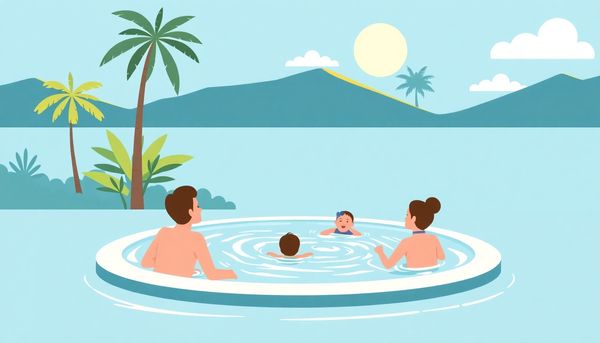
Handling chlorine properly is crucial to maintaining a safe and sparkling pool. Chlorine, though a friend to pool owners in keeping water clear and germ-free, can also be hazardous if not treated with respect. So, approach it with the same care you would when grilling on a new barbecue—cautiously and prepared.
First and foremost, gear up. Whenever you're handling chlorine, think safety first. Gloves are non-negotiable; they guard against skin irritation. A pair of goggles is also wise to shield your eyes from accidental splashes. Ventilation is your ally; work in an open area to minimize inhaling fumes. This is not just a suggestion—it’s a practice that serves both the novice and the seasoned pool caretaker alike.
Chlorine has a bit of a temper. It reacts strongly when mixed with other chemicals, so ensure storage is separate from any household cleaners or other pool chemicals. When storing chlorine, opt for a dry, cool location away from direct sunlight. Sunlight not only triggers a breakdown of the chemical but can also turn storage into a ticking time bomb of sorts.
Finally, take the time to familiarize yourself with the specific instructions for the type of chlorine you're using, be it tablets, granules, or liquid. Each form comes with its own set of rules and quirks, and following the manufacturer's guidelines can prevent mishaps. Chlorine may be a powerful pool ally, but underestimating its potency can lead to unnecessary complications. Always handle with care, and your pool will reward you with crystal-clear waters.
Maintaining the right chlorine levels in your pool is like baking the perfect cake; get the balance just right, and everything else falls into place. The sweet spot for free chlorine is between 1 and 3 parts per million (PPM), with 3 PPM being the ideal target. This level ensures that your pool stays clean and safe, without the unpleasant odor or irritation that can come from over-chlorination.
Fluctuations in chlorine levels can be sneaky. After a weekend pool party or a heavy rainstorm, you might notice the chlorine levels dipping. This could also happen if your cyanuric acid levels are off balance, leaving your chlorine vulnerable to the sun’s harsh UV rays. To keep everything in check, weekly testing is a must. It’s quick, easy, and saves you from potential headaches down the line. If you find that chlorine levels are dropping to zero despite regular maintenance, it might be time to explore deeper issues like algae blooms or faulty equipment.
When testing, don’t overlook the importance of pH and total alkalinity. These factors influence how effectively chlorine does its job. By first balancing alkalinity, then adjusting pH, and finally fine-tuning your chlorine, you set your pool up for sparkling success. With a little diligence, you can master the art of pool maintenance and enjoy crystal-clear waters all season long.
Selecting the right chlorine dispenser for your pool is like choosing the perfect tool for a task—it simplifies maintenance and ensures effectiveness. My neighbor, who spent last summer with a perpetually cloudy pool, learned this lesson the hard way. Initially, she relied on a floating dispenser filled to the brim with tablets, hoping it would do the trick. But soon, uneven chlorine levels led to algae blooms and frustration. Her mistake? Not considering how this method might distribute chlorine inconsistently.
In contrast, an automatic chlorinator can be a game-changer, offering precise control over chlorine release. This device connects directly to your pool’s filtration system, ensuring even distribution as water circulates. With a simple dial adjustment, you can set the exact rate at which chlorine dissolves, tailored to your pool’s size and usage. This method might save you the headache of fluctuating chlorine levels and the hassle of constantly checking if your floater has drifted into a corner, causing liner discoloration.
For those using granules or liquid chlorine, the choice of dispenser is less critical, but technique still matters. Granules should be pre-dissolved to prevent staining, and liquid chlorine should be poured slowly to ensure even dispersal. Ultimately, the right dispenser or technique doesn’t just maintain clear waters; it preserves your pool’s condition and saves you time in the long run.
Balancing pool chemistry is akin to fine-tuning a musical instrument. To achieve that perfect harmony, you need to keep a keen eye on several elements, not just the chlorine. Weekly maintenance begins with testing the water, a task that can be expedited using a multi-test kit. These kits quickly assess parameters like total hardness, free chlorine, pH, total alkalinity, and cyanuric acid—the vital statistics of any healthy pool.
I recall a summer when my pool seemed more like a swamp than an oasis. After a bit of investigation, it turned out I had overlooked balancing the pH and alkalinity, which rendered the chlorine ineffective. Lesson learned: start with alkalinity, as it stabilizes your pH. A stable pH ensures chlorine works at its peak, fighting off bacteria and keeping algae at bay.
Once the pH and alkalinity are squared away, it's time to focus on the chlorine levels. Aim for free chlorine to hover between 1 and 3 PPM. Should you notice an unusual drop in these numbers, it might signal an underlying issue, such as high organic load or inadequate stabilizer (CYA). Regularly checking these levels ensures your water remains clear and inviting, saving you headaches down the line.
In essence, testing and balancing your pool chemistry is not just about maintaining appearances. It’s about creating a welcoming, safe environment for all those spontaneous summer swims and lazy afternoons by the poolside.
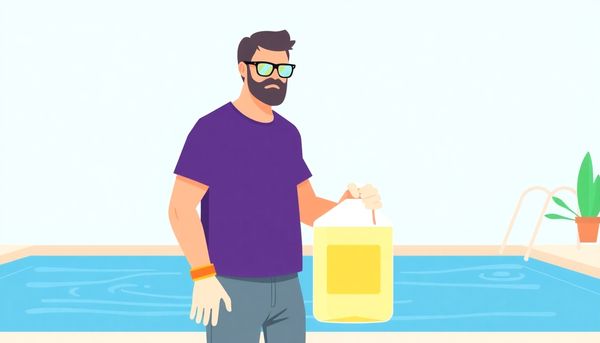
Ensuring effective chlorine circulation in your pool is akin to crafting a perfect recipe—it requires the right blend of timing, equipment, and patience. When chlorine disperses evenly, it not only sanitizes effectively but also ensures that every swimmer enjoys a safe experience. One might think that simply adding chlorine is enough, but without proper circulation, those efforts could be in vain.
Start by running your pool pump consistently, ideally for 8-12 hours daily, especially after adding chlorine. This constant movement keeps the water from stagnating and allows the chlorine to be evenly distributed. If your pool uses an automatic chlorinator, ensure it's functioning optimally, as this device can significantly enhance circulation by feeding chlorine consistently into the flowing water. Manually adding liquid chlorine or dissolved granules directly in front of the return jets can also improve distribution, as these jets propel the chlorine throughout the pool.
In addition, understand that clean filters play a crucial role. Clogged or dirty filters can impede water flow, reducing the effectiveness of your chlorine. Regularly inspect and clean your filters to maintain optimum performance. Lastly, if your pool features dead zones—areas where water circulation is minimal, like corners or behind steps—consider positioning your return jets or using a pool brush to manually stir the water in these spots.
By optimizing circulation, not only do you maximize the efficacy of your chlorine, but you also prolong the life of your pool equipment and enjoy crystal-clear water.
Choosing the right type of chlorine for your pool isn’t just about preference; it can significantly impact maintenance efficiency and water quality. Each form of chlorine—tablets, granules, and liquid—has distinct characteristics suited for different needs. Tablets are a favorite among pool owners for their convenience. They dissolve slowly, providing a steady source of chlorine, which is ideal if you prefer a low-maintenance approach. However, they can affect your pool’s pH and cyanuric acid levels, so weekly testing is essential to maintain balance.
Granules, on the other hand, offer flexibility, allowing for quick adjustments when immediate chlorine boosts are necessary. They dissolve faster than tablets, making them suitable for pools that need a rapid increase in chlorine levels after heavy use or rain. Remember to pre-dissolve granules to avoid sediment accumulation at the pool's bottom, which could lead to discoloration or damage.
Liquid chlorine, while potent, requires careful handling due to its high concentration. It's perfect for shock treatments, rapidly correcting chlorine deficiencies, or dealing with algae blooms. Unlike tablets and granules, liquid chlorine doesn’t add cyanuric acid to the pool, so keep an eye on stabilizer levels to ensure the chlorine's longevity against UV rays.
Ultimately, the choice depends on your pool's specific demands and your maintenance routine. Whether you prefer the convenience of tablets, the speed of granules, or the power of liquid chlorine, understanding these differences lets you keep your pool sparkling with minimal hassle.
Balancing the pH and alkalinity of your pool is like setting the stage for a successful pool party; without the right backdrop, even the best chlorine won’t deliver its full potential. When I first started maintaining my pool, I overlooked these two critical factors, and the result was less than sparkling. A balanced pH, ideally between 7.2 and 7.8, ensures that chlorine works effectively, while total alkalinity, ideally between 80 and 120 ppm, acts as a buffer, preventing those frustrating pH swings.
Consider alkalinity as the unsung hero, quietly supporting the stability of pH. If it’s too low, pH fluctuations become a rollercoaster ride, and if it’s too high, adjusting your pool’s chemistry can feel like steering a ship against the current. In my experience, dedicating a few minutes each week to test these levels saves hours of troubleshooting down the line.
One time, after a heavy rainstorm, my pool's pH plummeted, causing my chlorine to become almost useless. A quick adjustment using an alkalinity increaser brought things back to balance, highlighting how interconnected these elements truly are. So, as you prepare your weekly chlorine treatment, remember to check and adjust your pH and alkalinity first. This small step ensures that your chlorine does its job, keeping your pool inviting and your swim sessions worry-free.
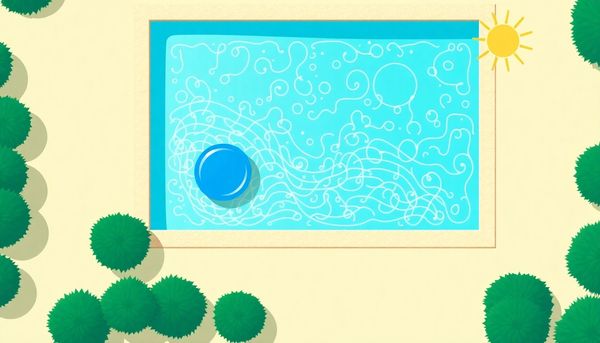
This article provided insights into maintaining your pool. Start your pool care journey today!
Want to become a pool maintenance expert? Our free Pool School course covers everything you need to know about pool care. From basic maintenance to advanced troubleshooting, you'll learn how to:
Join over 10,000 pool owners who have already transformed their pool care routine. Get started with our free Pool School course today!